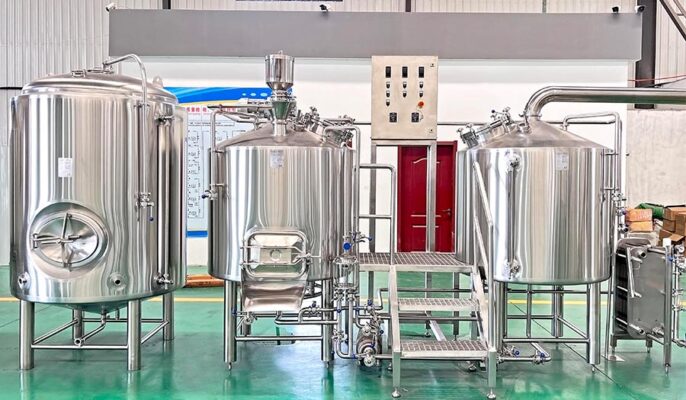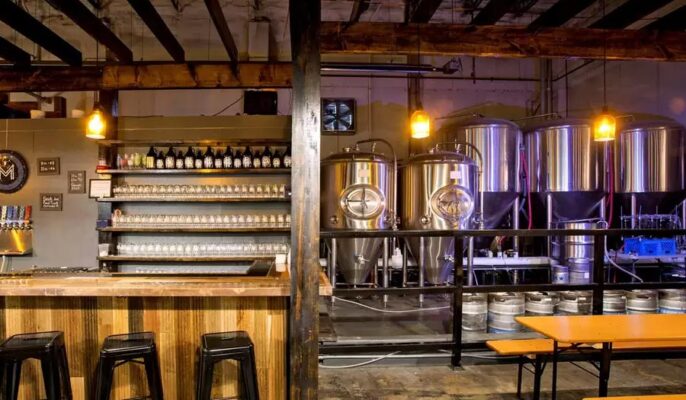If you plan to start a brewery, you might want to know how much profit this business can bring in. In other words, you must know how much revenue you must generate to break even and make a profit. With the ever-growing craft beer market, small brewery is a compelling business opportunity. Many entrepreneurs and beer enthusiasts have entered this field, seeking to stand out in a competitive market.
How long does it take for a small brewery to become profitable?
The time it takes for a small brewery to start up and become profitable varies depending on several factors.
Initial investment and demand
The initial investment includes purchasing brewing equipment, plant construction, raw material procurement, and license application, which may bring greater financial pressure in the early stages of operation. A well-capitalized small brewery may get through the loss period and enter a profitable state more quickly. Conversely, a shortage of funds may lead to a longer time to profitability.
Market acceptance
Market acceptance has an important impact on the speed of profitability. If a small brewery can quickly establish brand awareness and gain consumer love and loyalty, its sales growth rate will be faster, thereby shortening the time to profitability. The success of brand building and marketing directly affects sales.
Production efficiency and cost control
Production efficiency and cost control are important factors in determining profitability. Small breweries need to effectively control raw material procurement, production processes, and operational management to reduce unit costs. Efficient production processes and good cost control can help manufacturers achieve profitability faster.

Marketing and brand building
Effective marketing and brand building can accelerate the speed of profitability. Through precise market positioning, innovative marketing strategies, and strong branding, small breweries can quickly increase market exposure and consumer awareness, driving sales growth.
Operation scale and expansion plan
Operation scale and expansion plan also affect the time to profitability. Small-scale initial operations may take more time to break even. As production scale increases and markets expand, profitability usually increases gradually. Timely expansion and diversification can also help speed up the process of profitability.
What is the average profit margin for a small brewery?
In recent years, income levels for small brewery owners in the United States have varied, with factors such as geographic location, market size, and business model playing a major role in determining income. Based on industry benchmarks and actual statistics from 2022 to date, the average annual income for small brewery owners is generally between $50,000 and $100,000.
For a brewery, there are 3 different profit margins:
- Gross profit margin: revenue minus all cost of goods sold (COGS) expenses (malt, hops, etc.)
- EBITDA profit margin: revenue minus all operating expenses (COGS, wages, rent, etc.)
- Net profit margin: revenue minus all expenses (COGS, wages, rent, corporate taxes, etc.)
While there is no publicly disclosed EBITDA and net profit margin data, the average gross profit margin for breweries ranges from 74% to 92%.
Is a small brewery profitable?
Running a brewery involves certain recurring expenses, which include:
- Raw materials: You must purchase raw materials for your brewery, which are the largest cost
- Packaging: Packaging is the second largest expense, usually accounting for 10% of sales
- Rent: You must pay rent for the commercial space used for brewing
- Employee wages: You must pay wages to your employees
- Insurance: You will need mandatory general liability insurance and other types of insurance policies
- Marketing: You will need to invest in marketing and advertising to gain visibility and build trust
The first year of starting a business will be more expensive, but it is crucial to the success of your brewery. The startup costs of a brewery mainly include top-of-the-line beer brewing equipment, brewing space, and licenses. In addition to these initial costs, it is also important to calculate the monthly expenses for the first year of operation.
An emergency fund can help your brewery stay afloat until it becomes profitable. Liquid assets in the form of personal loans, savings, or investments are needed to pay employee wages or any unforeseen expenses.
- Start-up business–$500,000–$1,500,000
- Brewery equipment –$500,000-$1,000,000
- Permit/license–$500 to $3,000
- Emergency fund–$20,000–$500,000

Factors Affecting the Profitability of Small brewery
- Market Demand: As consumers become more interested in craft beer, small breweries have the opportunity to meet the market’s demand for unique flavors and high-quality beer. The growing trend of craft beer provides small breweries with good profit opportunities.
- Brand Premium: Small breweries are often able to achieve a certain premium through brand stories and unique product positioning. Unlike the standardized products of large breweries, the personalized and high-quality products of small breweries are often able to attract consumers who are willing to pay a higher price for them.
- Local Market: Small breweries are often able to establish a stable customer base in the local market. By cooperating with local bars, restaurants, and retailers, they can increase brand exposure and boost sales.
- Product Diversification: Small breweries are often able to flexibly adjust their product lines and launch limited edition or seasonal products to meet market changes and the diverse needs of consumers. This flexibility can help them stand out from the competition and increase profit opportunities.
Challenges faced by small breweries
- Economies of scale: Small breweries often have difficulty achieving economies of scale, so production costs are higher than large breweries. Limited production capacity may prevent them from purchasing raw materials and equipment at favorable prices, thus affecting profitability.
- Funding: Establishing and starting a brewery requires a large initial investment, including equipment acquisition, raw material procurement, and facility construction. In the early stages, it may take a long time to achieve profitability, so the management of working capital is very important.
- Market competition: Large breweries and international brands have stronger market share and resources, and competition can be very fierce. Other small breweries and local brewers may also form competition.
- Distribution restrictions: It is difficult for small breweries to establish a strong distribution network, especially when competing with larger and more established brands. Restrictions on distribution channels and distribution-related costs may affect the reach and profitability of breweries.
- Regulatory compliance: Complying with various regulations, licensing requirements, and quality standards can impose significant costs on small breweries, affecting their bottom line and profitability.
How to improve the profitability of a small brewery?
- Niche products: Focusing on niche and specialty beers that meet specific consumer preferences can help small breweries develop a dedicated customer base and earn premiums, thereby improving profitability.
- Direct-to-consumer sales: Direct-to-consumer sales through bars, breweries, or online platforms can help small breweries eliminate the intermediary costs associated with traditional distribution channels, thereby maximizing profits.
- Cost control: Establish long-term partnerships with suppliers to strive for better prices and stable supply. Optimize energy use, such as water, electricity, etc., use energy-saving equipment, and reduce operating costs. Consider outsourcing certain production links or cooperating with other businesses to reduce fixed costs and operating risks.
- Cooperation and partnerships: Establishing strategic partnerships with local businesses, restaurants, and retailers can increase brand awareness and create new sources of revenue, allowing small breweries to expand their market reach and improve profitability.
- Community involvement: Building strong community relationships through events, sponsorships, and local initiatives can cultivate brand loyalty and support, drive customer engagement, and improve profitability.
- Operational efficiency: Implementing efficient brewing practices, optimizing resource utilization, and managing overhead can impact the profitability of small breweries and ensure sustainable growth in a competitive market.
- Expand sales channels: Establish online sales channels, sell through your own websites or e-commerce platforms, and expand market coverage. Strengthen cooperation with local bars, restaurants, and stores to increase sales.




